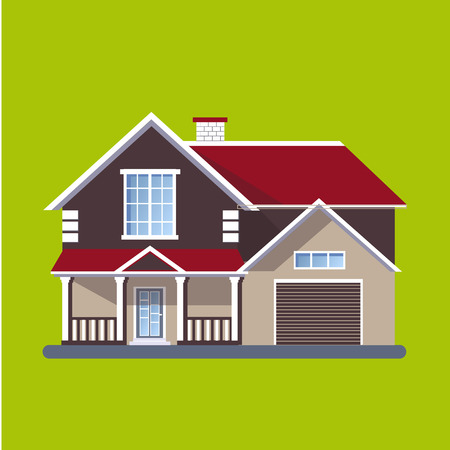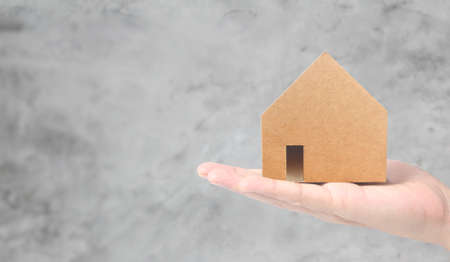1. Choosing the Right Location for Your Home Office
When building an eco-friendly home office, choosing the right location inside your home is one of the most important first steps. A smart location helps reduce energy consumption, improves indoor air quality, and creates a healthier, more productive work environment. Heres what to consider when selecting the ideal spot:
Maximize Natural Light
Pick a room or area that gets plenty of natural sunlight during the day. This reduces your need for artificial lighting, saving energy and lowering your electricity bill. South-facing windows are especially effective in letting in consistent daylight without too much glare.
Benefits of Natural Lighting
| Benefit | Description |
|---|---|
| Energy Savings | Less reliance on lamps and overhead lights during the day. |
| Mood Boosting | Natural light supports mental well-being and productivity. |
| Reduced Eye Strain | Softer, natural light is easier on the eyes than harsh artificial lighting. |
Ensure Proper Ventilation
Good airflow is essential for a healthy workspace. Choose a space with windows you can open to let in fresh air. This helps regulate temperature naturally and improves indoor air quality by reducing pollutants and allergens. If windows arent an option, consider installing an energy-efficient ceiling fan or using an air purifier made with sustainable materials.
Check Insulation and Temperature Control
An eco-friendly home office should stay comfortable year-round without overusing heating or cooling systems. Rooms that are already well-insulated—like those with double-pane windows or insulated walls—are great choices. Avoid spaces like garages or sunrooms that may require constant climate control unless youre ready to upgrade their insulation.
Location Comparison Table
| Room Type | Natural Light | Ventilation | Insulation Quality | Eco-Friendly Score (1-5) |
|---|---|---|---|---|
| Spare Bedroom (South-Facing) | High | Good (Window Present) | High (Interior Room) | 5 |
| Basement Room | Low | Poor (Limited Airflow) | Moderate (Cool Year-Round) | 2 |
| Converted Garage | Moderate | Poor (Needs Upgrades) | Low (Often Uninsulated) | 1 |
| Living Room Corner Nook | High | Good (Open Space) | Moderate (Shared HVAC) | 4 |
Selecting a space with these eco-conscious factors in mind not only helps reduce your environmental footprint, but also creates a healthier and more inspiring place to work from home.
2. Incorporating Sustainable Building Materials
When designing an eco-friendly home office, one of the best places to start is by choosing sustainable building materials. Not only are these materials better for the environment, but they also help create a healthier indoor atmosphere for you to work in every day. Below are some popular and accessible options that can make a big difference.
Reclaimed Wood
Reclaimed wood adds character and warmth to your home office while reducing the demand for newly harvested timber. It’s perfect for desks, shelving, flooring, or accent walls. Each piece has its own story and natural imperfections that give your space a unique charm.
Bamboo
Bamboo is a fast-growing renewable resource that works well for flooring, furniture, and even wall panels. Its strong, stylish, and grows much faster than traditional hardwoods, making it an environmentally responsible choice.
Low-VOC Paints
Paints with low levels of volatile organic compounds (VOCs) improve indoor air quality and reduce harmful emissions. These paints come in a wide range of colors and finishes, so you don’t have to compromise on style while staying eco-conscious.
Recycled Glass
Recycled glass can be used in countertops, tiles, or decorative features. It brings a modern look to your workspace and keeps waste out of landfills. It’s also durable and easy to clean—perfect for high-use areas like your home office.
Quick Comparison of Eco-Friendly Materials
| Material | Main Benefit | Common Uses |
|---|---|---|
| Reclaimed Wood | Reduces deforestation; adds character | Desks, shelves, floors |
| Bamboo | Fast-growing; highly renewable | Flooring, furniture |
| Low-VOC Paints | Improves indoor air quality | Walls, ceilings |
| Recycled Glass | Diversion from landfills; stylish | Countertops, tiles |
Using these sustainable materials not only helps protect the planet but also creates a workspace that feels good to spend time in. Whether youre remodeling an existing room or starting from scratch, incorporating green materials is a smart way to build a healthier home office.

3. Maximizing Energy Efficiency
Creating an eco-friendly home office isnt just about using sustainable materials—its also about reducing your energy use. By choosing smart and efficient technologies, you can cut down on power consumption while staying comfortable and productive. Here’s how you can do it:
Use LED Lighting
Switching to LED bulbs is one of the easiest ways to save energy. Compared to traditional incandescent bulbs, LEDs use up to 80% less energy and last much longer. Plus, they come in a variety of brightness levels and color temperatures to match your work needs.
Benefits of LED Lighting:
| Feature | LED Bulbs | Incandescent Bulbs |
|---|---|---|
| Energy Use | Low | High |
| Lifespan | 15,000–50,000 hours | 1,000 hours |
| Heat Emission | Minimal | High |
Choose Energy-Efficient Appliances
If your home office includes equipment like printers, monitors, or even a mini fridge or coffee maker, look for models with the ENERGY STAR® label. These appliances are certified to use less power without sacrificing performance.
Quick Tip:
Unplug devices when not in use or plug them into a smart power strip that cuts off standby power automatically.
Install a Smart Thermostat
A smart thermostat helps you control the temperature in your home office more efficiently. It learns your schedule, adjusts the heating and cooling accordingly, and can even be controlled remotely from your phone. This prevents unnecessary energy use when the room is empty.
Main Features of Smart Thermostats:
- Remote access: Adjust settings via smartphone apps
- Learning capability: Adapts to your daily routine over time
- Energy reports: Track your usage and find ways to save more
Add Solar Panels (If Possible)
If youre ready to make a bigger investment in sustainability, consider installing solar panels on your roof. Solar energy can significantly reduce your electricity bills and lower your carbon footprint. While the upfront cost may be high, federal tax incentives and long-term savings make it worth considering.
Did You Know?
The U.S. federal government offers a tax credit of up to 30% of the installation cost for residential solar systems.
By combining these strategies—LED lighting, efficient appliances, smart thermostats, and solar panels—you can create a highly energy-efficient home office that supports both your productivity and the planet.
4. Embracing Natural Light and Indoor Air Quality
Creating a healthy, eco-friendly home office goes beyond just choosing the right furniture and materials. Maximizing natural light and improving indoor air quality are key to boosting productivity and overall well-being. Here’s how you can create a bright, breathable workspace that supports both the environment and your daily performance.
Maximize Natural Light
Natural light not only reduces your need for artificial lighting but also helps regulate your mood and energy levels. Try positioning your desk near a window to take advantage of daylight. If your space lacks sufficient windows, consider installing skylights or solar tubes to bring in more natural light without increasing your energy consumption.
Window Treatments That Work
The right window treatments can help you control glare while maintaining energy efficiency. Look for options made from sustainable materials like organic cotton, bamboo, or recycled fabrics. Heres a quick comparison of popular eco-friendly window treatments:
| Type | Material | Eco-Friendly Benefit |
|---|---|---|
| Roman Shades | Organic Cotton | Biodegradable, non-toxic dyes |
| Bamboo Blinds | Bamboo | Fast-growing renewable resource |
| Recycled Roller Shades | Recycled PET or Polyester | Reduces landfill waste |
Improve Indoor Air Quality Naturally
Good air quality is essential for a healthy work environment. Poor ventilation can lead to fatigue, headaches, and reduced concentration. Consider these simple ways to breathe easier while staying green:
Add Air-Purifying Plants
Certain houseplants naturally filter toxins from the air while adding a calming touch to your workspace. Some low-maintenance favorites include:
- Spider Plant: Removes formaldehyde and carbon monoxide.
- Snake Plant: Filters benzene and improves oxygen levels at night.
- Aloe Vera: Purifies the air and doubles as a soothing gel for minor cuts.
Use Eco-Friendly Air Purifiers
If youre looking for more powerful filtration, choose air purifiers with HEPA filters made from recyclable materials or models certified by ENERGY STAR for energy efficiency. Avoid purifiers with ozone emissions, which can be harmful to indoor environments.
Sustainable Tip:
You can also improve ventilation naturally by opening windows when weather permits or using ceiling fans made from recycled or sustainable materials to keep air circulating.
An eco-friendly home office that embraces natural light and clean air doesn’t just support the planet—it supports your health and productivity too.
5. Choosing Sustainable Furniture and Office Equipment
Creating an eco-friendly home office goes beyond just using energy-efficient lighting or reducing paper waste—it also involves choosing the right furniture and equipment that align with sustainable design principles. By selecting ergonomic and environmentally responsible pieces, you can build a workspace thats both comfortable and kind to the planet.
Why Sustainable Furniture Matters
Furniture made from non-toxic, responsibly sourced materials helps reduce your environmental footprint. Look for items that are made from recycled content or certified by trusted organizations like the Forest Stewardship Council (FSC). These certifications ensure that the wood used comes from responsibly managed forests that provide environmental, social, and economic benefits.
Key Features to Look For
When shopping for sustainable office furniture and equipment, here are a few features to keep in mind:
| Feature | Description |
|---|---|
| FSC-Certified Wood | Ensures materials come from responsibly managed forests. |
| Recycled Materials | Products made from recycled plastic, metal, or wood help reduce waste. |
| Low-VOC Finishes | Volatile Organic Compounds (VOCs) can pollute indoor air—opt for low-VOC paints and finishes. |
| Durability | High-quality furniture lasts longer, reducing the need for frequent replacements. |
| Modular Design | Easily adaptable pieces allow you to reconfigure your space without buying new items. |
Ergonomics Meets Sustainability
An eco-friendly office should also support your physical health. Look for ergonomic chairs made with recycled components or desks crafted from FSC-certified bamboo. Adjustable standing desks with sustainably sourced tops offer flexibility while keeping your workspace green.
Sustainable Equipment Choices
Your tech choices matter too. Opt for Energy Star-rated electronics like printers, monitors, and computers. These use less power without sacrificing performance. Refurbished or second-hand devices can also be great options—just make sure they’re still efficient and safe to use.
Tip:
If youre replacing old furniture or equipment, donate it whenever possible instead of sending it to a landfill. Many local charities and recycling centers accept gently used office items.
6. Reducing Waste and Promoting Eco-Conscious Habits
Creating an eco-friendly home office goes beyond choosing sustainable materials—its also about embracing daily habits that reduce waste and support a greener lifestyle. By focusing on simple yet impactful strategies, you can design a workspace thats both functional and environmentally responsible.
Go Paperless Whenever Possible
One of the easiest ways to reduce waste in your home office is by minimizing paper use. Switching to digital documentation not only saves trees but also reduces clutter and boosts productivity. Use cloud storage services like Google Drive or Dropbox to manage files, and opt for e-signature apps like DocuSign for contracts and approvals.
Paperless Tools to Consider:
| Tool | Purpose |
|---|---|
| Google Docs | Create and share documents in real time |
| Evernote | Note-taking and task organization |
| DocuSign | Secure digital signatures |
Set Up a Recycling Station
A designated recycling area in your home office makes it easier to dispose of paper, cardboard, batteries, ink cartridges, and electronics properly. Label bins clearly so its convenient to separate recyclables from trash.
Suggested Recycling Categories:
- Papers & Cardboard
- E-waste (used electronics)
- Batteries & Light Bulbs
- Toner & Ink Cartridges
Simplify With Minimalist Design
A minimalist aesthetic not only gives your home office a clean, modern look—it also helps reduce consumption. Stick to essential furniture pieces, avoid unnecessary decor, and prioritize multifunctional items. This approach minimizes resource use during setup and keeps your space clutter-free over time.
Tips for a Minimalist Office:
- Select furniture with clean lines and neutral tones
- Avoid over-accessorizing—choose meaningful items only
- Use natural light as much as possible to reduce energy use
An eco-conscious home office isn’t built overnight, but with small consistent steps like these, you can make a big impact on both your productivity and the planet.


